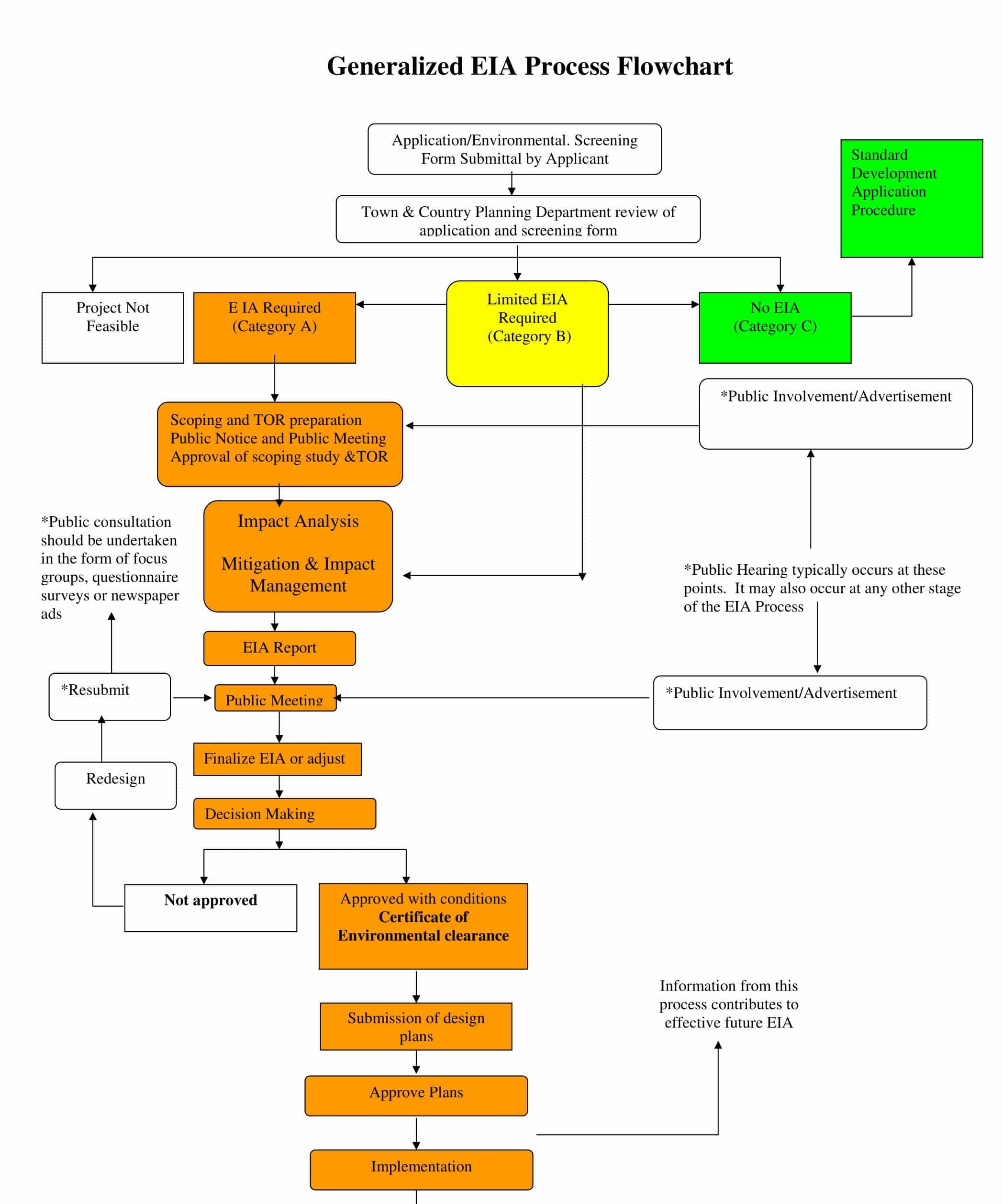Biodiversity & Environment
Environmental Impact Assessment
- 06 Jan 2020
- 12 min read
Introduction
- Environmental Impact Assessment (EIA) is a process of evaluating the likely environmental impacts of a proposed project or development, taking into account inter-related socio-economic, cultural and human-health impacts, both beneficial and adverse.
- UNEP defines Environmental Impact Assessment (EIA) as a tool used to identify the environmental, social and economic impacts of a project prior to decision-making. It aims to predict environmental impacts at an early stage in project planning and design, find ways and means to reduce adverse impacts, shape projects to suit the local environment and present the predictions and options to decision-makers.
- Environment Impact Assessment in India is statutorily backed by the Environment Protection Act, 1986 which contains various provisions on EIA methodology and process.
History of EIA in India
- The Indian experience with Environmental Impact Assessment began over 20 years back. It started in 1976-77 when the Planning Commission asked the Department of Science and Technology to examine the river-valley projects from an environmental angle.
- Till 1994, environmental clearance from the Central Government was an administrative decision and lacked legislative support.
- On 27 January 1994, the then Union Ministry of Environment and Forests, under the Environmental (Protection) Act 1986, promulgated an EIA notification making Environmental Clearance (EC) mandatory for expansion or modernisation of any activity or for setting up new projects listed in Schedule 1 of the notification.
- The Ministry of Environment, Forests and Climate Change (MoEFCC) notified new EIA legislation in September 2006.
- The notification makes it mandatory for various projects such as mining, thermal power plants, river valley, infrastructure (road, highway, ports, harbours and airports) and industries including very small electroplating or foundry units to get environment clearance.
- However, unlike the EIA Notification of 1994, the new legislation has put the onus of clearing projects on the state government depending on the size/capacity of the project.
The EIA Process
EIA involves the steps mentioned below. However, the EIA process is cyclical with interaction between the various steps.
- Screening: The project plan is screened for scale of investment, location and type of development and if the project needs statutory clearance.
- Scoping: The project’s potential impacts, zone of impacts, mitigation possibilities and need for monitoring.
- Collection of baseline data: Baseline data is the environmental status of study area.
- Impact prediction: Positive and negative, reversible and irreversible and temporary and permanent impacts need to be predicted which presupposes a good understanding of the project by the assessment agency.
- Mitigation measures and EIA report: The EIA report should include the actions and steps for preventing, minimizing or by passing the impacts or else the level of compensation for probable environmental damage or loss.
- Public hearing: On completion of the EIA report, public and environmental groups living close to project site may be informed and consulted.
- Decision making: Impact Assessment Authority along with the experts consult the project-in-charge along with consultant to take the final decision, keeping in mind EIA and EMP (Environment Management Plan).
- Monitoring and implementation of environmental management plan: The various phases of implementation of the project are monitored.
- Assessment of Alternatives, Delineation of Mitigation Measures and Environmental Impact Assessment Report: For every project, possible alternatives should be identified, and environmental attributes compared. Alternatives should cover both project location and process technologies.
- Once alternatives have been reviewed, a mitigation plan should be drawn up for the selected option and is supplemented with an Environmental Management Plan (EMP) to guide the proponent towards environmental improvements.
- Risk assessment: Inventory analysis and hazard probability and index also form part of EIA procedures.
Stakeholders in the EIA Process
- Those who propose the project
- The environmental consultant who prepare EIA on behalf of project proponent
- Pollution Control Board (State or National)
- Public has the right to express their opinion
- The Impact Assessment Agency
- Regional centre of the MoEFCC
Salient Features of 2006 Amendments to EIA Notification
- Environment Impact Assessment Notification of 2006 has decentralized the environmental clearance projects by categorizing the developmental projects in two categories, i.e., Category A (national level appraisal) and Category B (state level appraisal).
- Category A projects are appraised at national level by Impact Assessment Agency (IAA) and the Expert Appraisal Committee (EAC) and Category B projects are apprised at state level.
- State Level Environment Impact Assessment Authority (SEIAA) and State Level Expert Appraisal Committee (SEAC) are constituted to provide clearance to Category B process.
- After 2006 Amendment the EIA cycle comprises of four stages:
- Screening
- Scoping
- Public hearing
- Appraisal
- Category A projects require mandatory environmental clearance and thus they do not undergo the screening process.
- Category B projects undergoes screening process and they are classified into two types.
- Category B1 projects (Mandatorily requires EIA).
- Category B2 projects (Do not require EIA).
- Thus, Category A projects and Category B, projects undergo the complete EIA process whereas Category B2 projects are excluded from complete EIA process.
Importance of EIA
- EIA links environment with development for environmentally safe and sustainable development.
- EIA provides a cost effective method to eliminate or minimize the adverse impact of developmental projects.
- EIA enables the decision makers to analyse the effect of developmental activities on the environment well before the developmental project is implemented.
- EIA encourages the adaptation of mitigation strategies in the developmental plan.
- EIA makes sure that the developmental plan is environmentally sound and within the limits of the capacity of assimilation and regeneration of the ecosystem.
Shortcomings of EIA Process
- Applicability: There are several projects with significant environmental impacts that are exempted from the notification either because they are not listed in schedule I, or their investments are less than what is provided for in the notification.
- Composition of expert committees and standards: It has been found that the team formed for conducting EIA studies is lacking the expertise in various fields such as environmentalists, wildlife experts, Anthropologists and Social Scientists.
- Public hearing:
- Public comments are not considered at an early stage, which often leads to conflict at a later stage of project clearance.
- A number of projects with significant environmental and social impacts have been excluded from the mandatory public hearing process.
- The data collectors do not pay respect to the indigenous knowledge of local people.
- Quality of EIA: One of the biggest concerns with the environmental clearance process is related to the quality of EIA report that are being carried out.
- Lack of Credibility: There are so many cases of fraudulent EIA studies where erroneous data has been used, same facts used for two totally different places etc.
- Often, and more so for strategic industries such as nuclear energy projects, the EMPs are kept confidential for political and administrative reasons.
- Details regarding the effectiveness and implementation of mitigation measures are often not provided.
- Emergency preparedness plans are not discussed in sufficient details and the information not disseminated to the communities.
Way Forward
- Independent EIA Authority.
- Sector wide EIAs needed.
- Creation of a centralized baseline data bank.
- Dissemination of all information related to projects from notification to clearance to local communities and the general public.
- Applicability: All those projects where there is likely to be a significant alteration of ecosystems need to go through the process of environmental clearance, without exception.
- No industrial developmental activity should be permitted in ecologically sensitive areas.
- Public hearing: Public hearings should be applicable to all hitherto exempt categories of projects which have environmental impacts.
- The focus of EIA needs to shift from utilization and exploitation of natural resources to conservation of natural resources.
- It is critical that the preparation of an EIA is completely independent of the project proponent.
- Grant of clearance: The notification needs to make it clear that the provision for site clearance does not imply any commitment on the part of the impact Assessment agency to grant full environmental clearance.
- Composition of expert committees: The present executive committees should be replaced by expert people from various stakeholder groups, who are reputed in environmental and other relevant fields.
- Monitoring, compliance and institutional arrangements:
- The EIA notification needs to build within it an automatic withdrawal of clearance if the conditions of clearance are being violated and introduce more stringent punishment for noncompliance. At present the EIA notification limits itself to the stage when environmental clearance is granted.
- The composition of the NGT needs to be changed to include more judicial persons from the field of environment.
- Citizen should be able to access the authority for redressal of all violation of the EIA notification as well as issues relating to non-compliance.
- Capacity building: NGOs, civil society groups and local communities need to build their capacities to use the EIA notification towards better decision making on projects.






